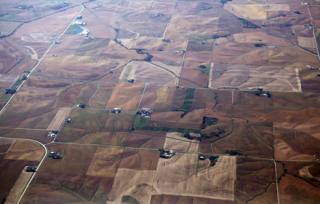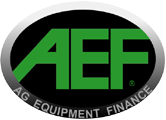Each year in Iowa, there are 2 to 3 million acres planted that have an expected negative return. That means the

Maximize ROI by Focusing on Marginal Acres
investment in inputs applied to those acres, roughly $1 billion, isn’t being returned. “That’s $1 billion of misallocated working capital,” says Dave Muth, one of the Ag Solver founders. “This is a massive opportunity.”
To maximize working capital, Muth wants farmers to transition from revenue-focused to ROI-focused agronomic planning.
For example, Muth and his father farm a field that makes $53 an acre, which comes out to a 6.7% return. On that field, there are 15 acres on a sandy ridge that consistently underperform. This year that sandy ridge is going into a pollinator habitat program, specifically CP-42. This change will bump the entire field’s expected profit up to $88 an acre, which increases the return to 11.7%.
“When you look at this closer, it means I am making $5,000 more by spending $8,000 less,” explains Muth. “I’ll argue that working capital preservation is the most important issue of our time.”
How does AgSolver fit into this concept? The company’s new Profit Zone Manager application can help you identify marginal acres through a business performance review of your land.
Profit Zone Manager
Using machine data and streamlined crop budgets, Profit Zone Manager determines the business performance of a field, including profitability and ROI. Profitability is shown across every acre, and 3% to 15% of every field that AgSolver has evaluated is consistently not profitable.
Scenario-development tools allow you to evaluate the best plan for the unprofitable acres. It was this tool that allowed Muth to identify how much money he was losing on the sandy ridge and how much he could gain by putting this into a conservation program. This is what he calls finding alternative low-cost revenue sources.
“Conservation programs are one example of this,” he says. “But don’t forget about hyper-local opportunities. For example, a farmer in Wisconsin we worked with started growing high-quality alfalfa to sell to a local dairy farmer. In other states, such as South Dakota, there are recreational opportunities for marginal acres.”
Or maybe it’s a simpler solution like cutting your seeding rate back in certain areas of the field, allowing you to reduce the amount you spend on seed.
“The big thing is being able to understand how the business model is working,” adds Muth. “It’s looking at the percentage of land you farm with an expected negative return and the working capital spent against an expected negative return and finding ways to reduce these two numbers.”
Evaluating In-Season Decisions
Profit Zone Manager can also help you make in-season crop decisions, which is another area where Muth believes there is room to improve.
“Once crops are in the field, farmers tend to spend almost haphazardly to protect that crop without understanding how that spending is impacting the incremental cost of each bushel,” he explains. “Farmers need to understand that protecting bushels does not always pay.”
Using the scenario tools, you can evaluate if the additional investment in fungicides or other crop protection products is made back by the yield increase.
Environmental Bonus
AgSolver developed the Profit Zone Manager application as a tool to help land managers, landowners, and farmers maximize ROI. However, the cloud-based Web service also has a positive environmental impact.
By identifying unprofitable acres, you can decide whether or not it makes sense to keep applying the same rates of nitrogen on these parts of the field. “Over and over again we can see that where you aren’t making money, you have high N losses. If you put down 200 pounds of N and only have 50 bushel-per-acre yields, you have nitrogen that isn’t being used,” says Muth.
If N rates were reduced or if the land was taken out of production, by finding an alternative low-cost revenue source, farmers will spend less on nitrogen. There will also be less nitrogen that ends up in rivers and streams. “This could reduce nitrate losses by millions of pounds,” says Muth. “And hopefully it could slow down or stop the regulatory hammer that would be prohibitive to American farmers. This is a plan that makes everybody happy at the same time.”
Access to AgSolver’s basic profit mapping system starts at $250. An annual subscription to the Profit Zone Manager Analysis Suite is available for $1,995. This includes customer service, a three-hour consultation, and a one-day pass to AgSolver’s Precision Business Planning seminar.
Article/photo via agriculture.com

